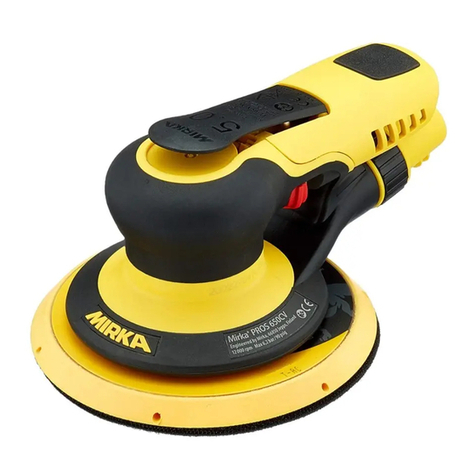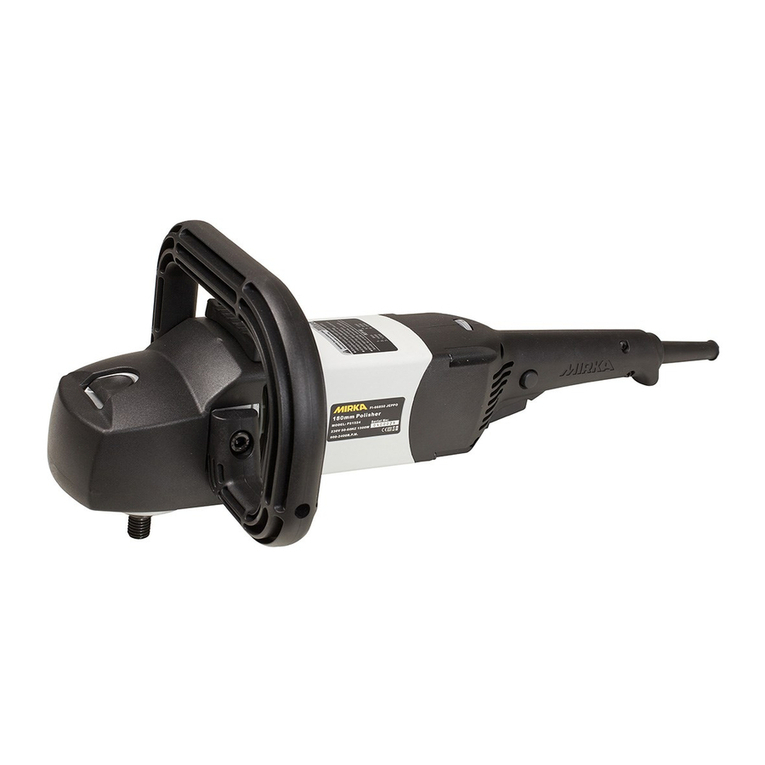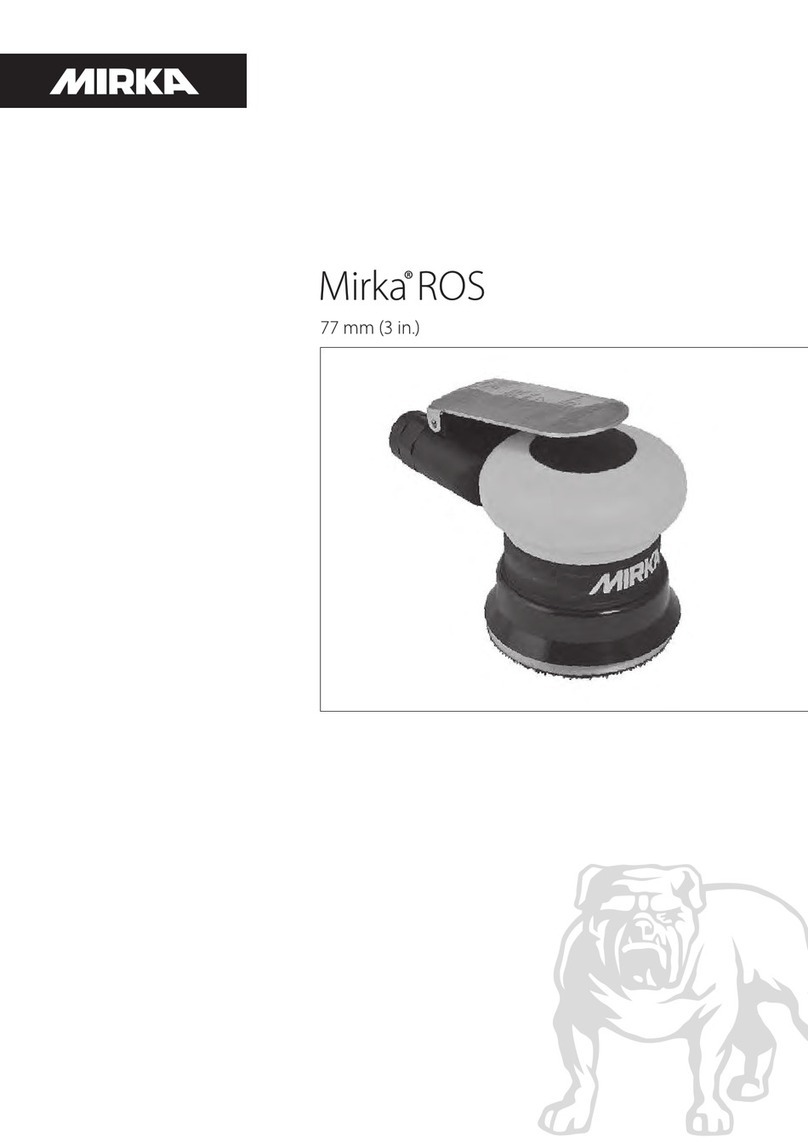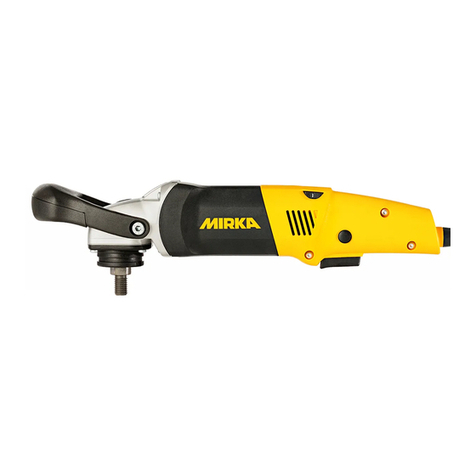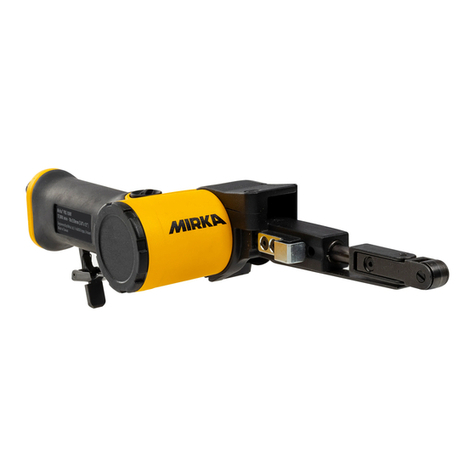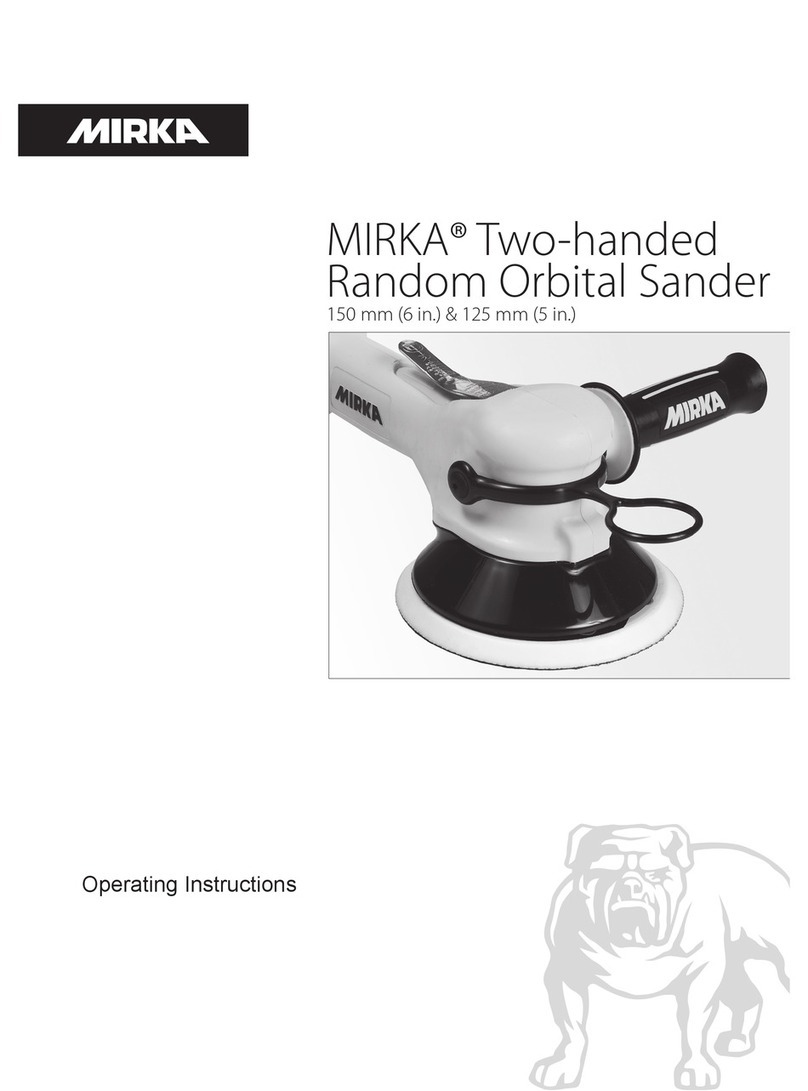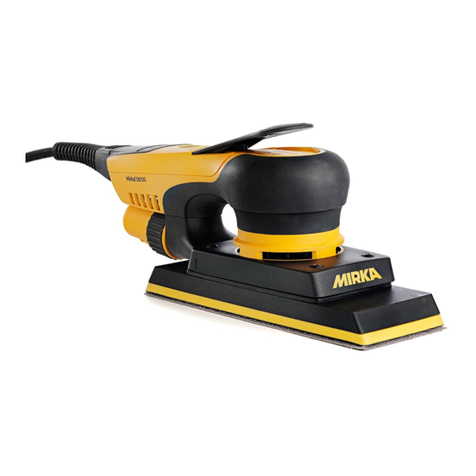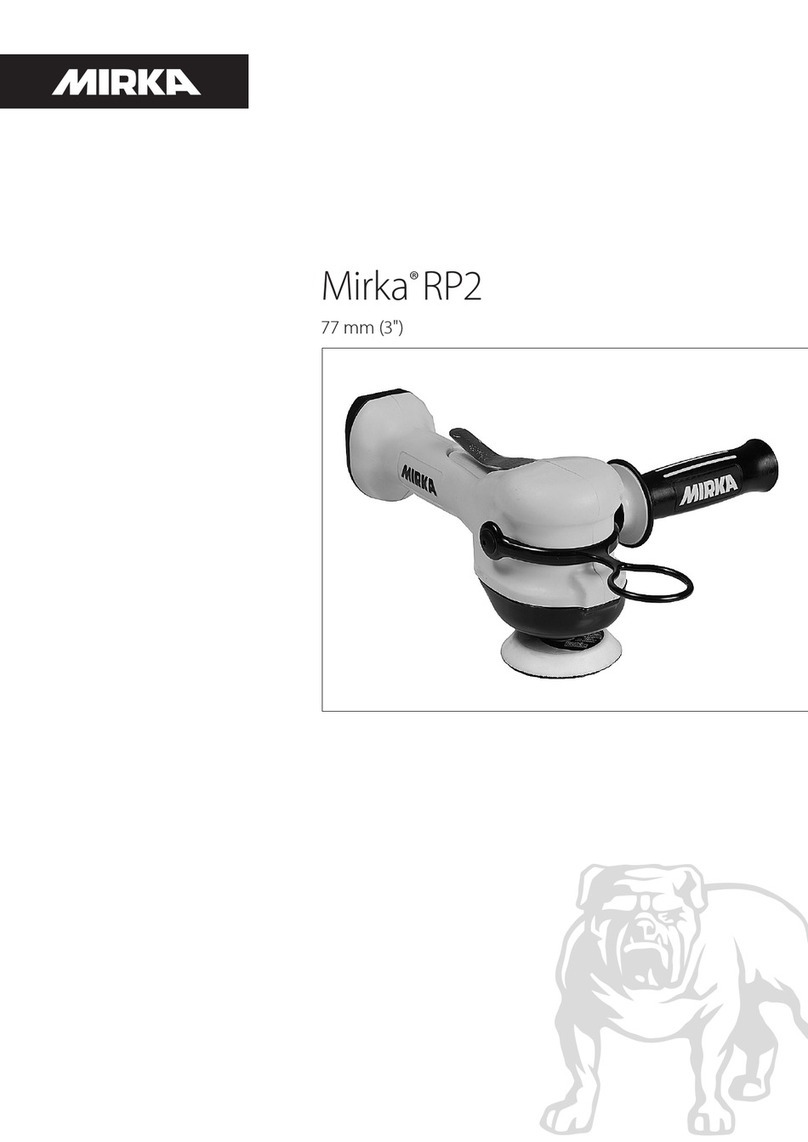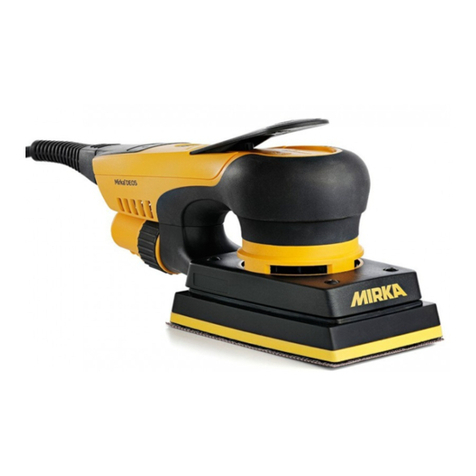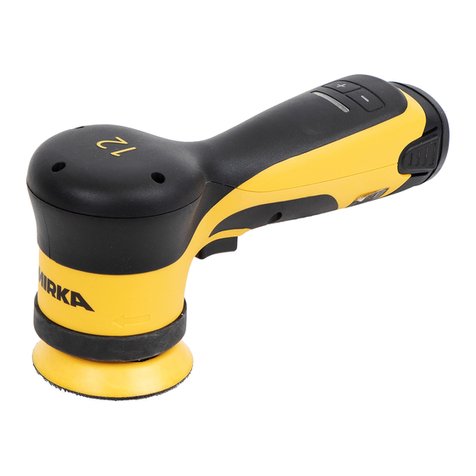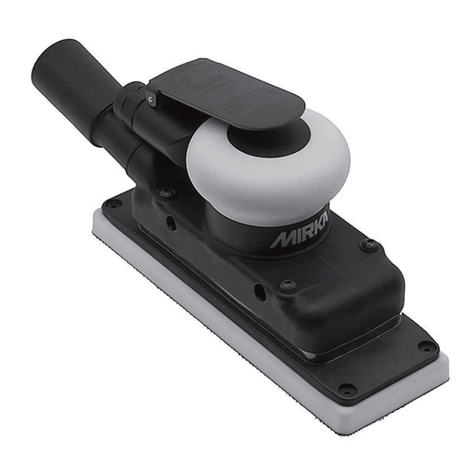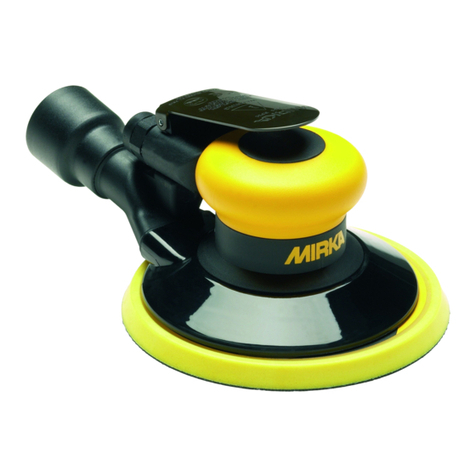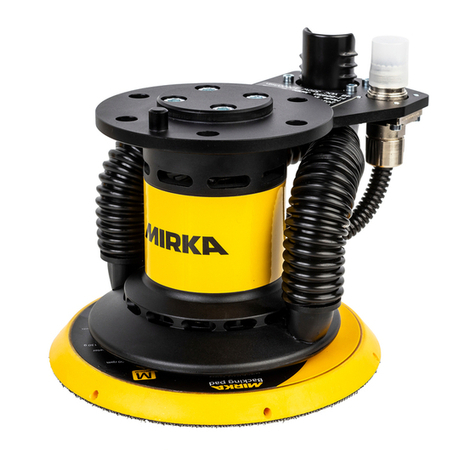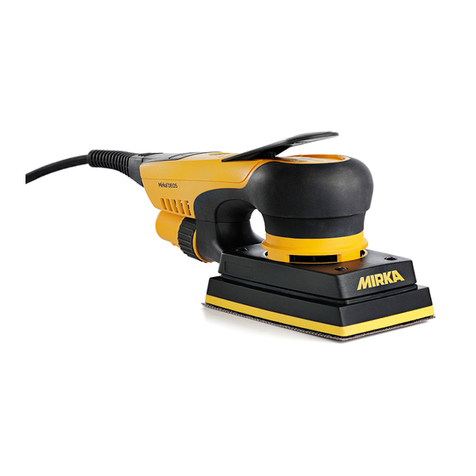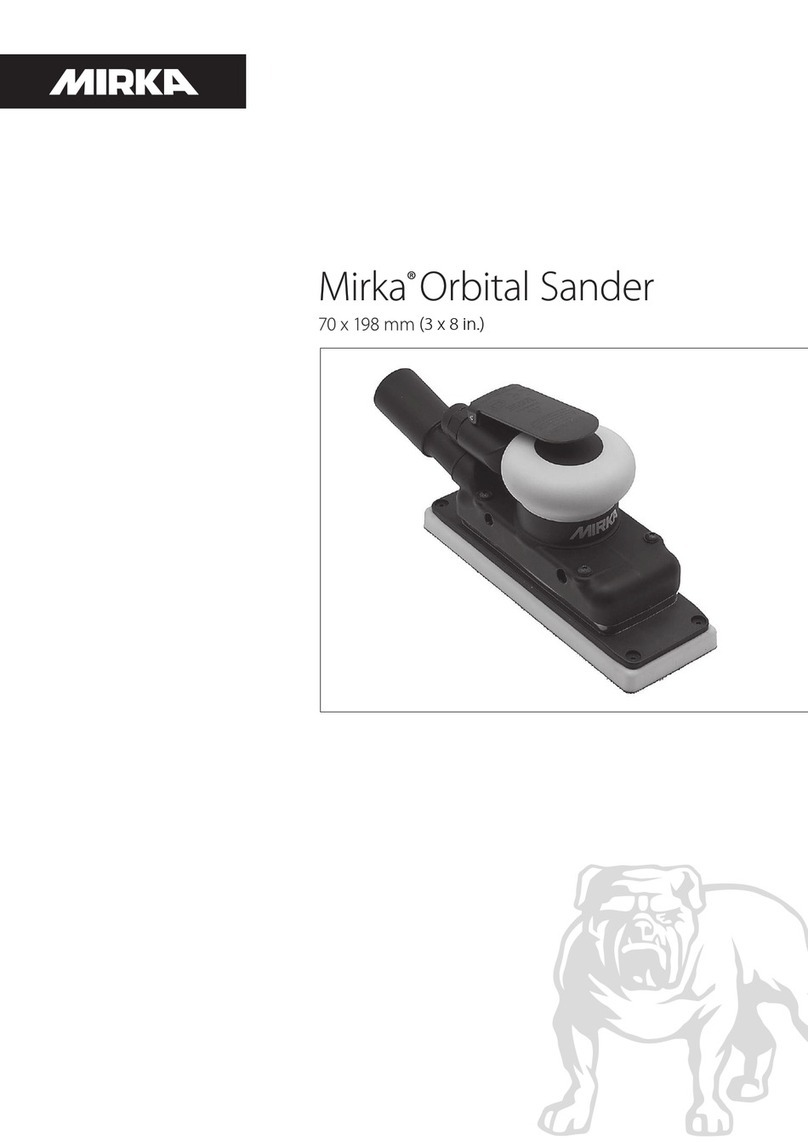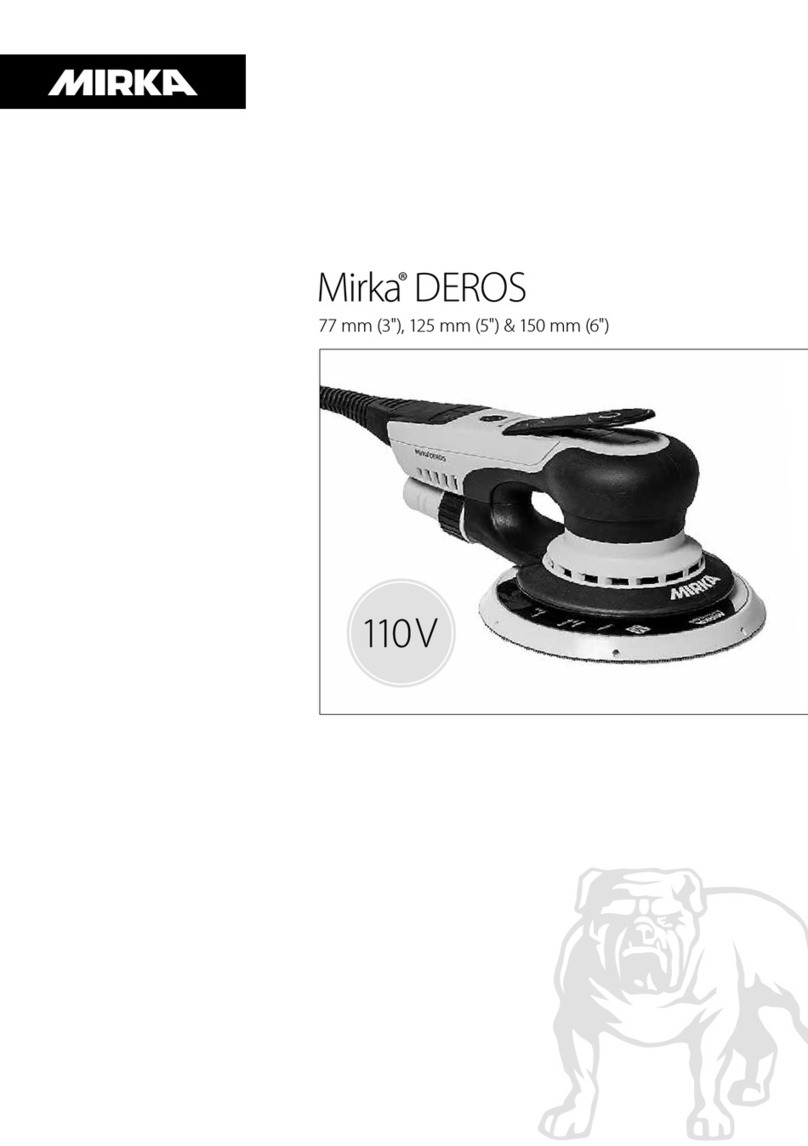
10 Mirka® LEROS Random Orbital Sander • 225 mm (9") • 100–240 V & 110 V
en
Declaration of conformity
Mirka Ltd, 66850 Jeppo, Finland
declare under our sole responsibility that the product Mirka® LEROS 225 mm (9") 8,000 rpm Electrical Random
Orbital Sander (see“Technical data”table for particular model) to which this declaration relates is in conformity with
the following standards or other normative documents: EN 62841-1:2014, EN 62841-2-4:2014, EN 55014-1:2006 +
A1:2009 + A2:2011, 55014-2:1997 + A1:2001 + A2:2008, EN 61000-3-2:2014, EN 61000-3-3:2013, EN 301 489 V2.1.1,
EN 301 489-17 V3.1.1, EN 300 328 V2.1.1 in accordance with regulations 2006/42/EC, 2014/53/EU, 2011/65/EU.
Jeppo 13.04.2020
Place and date of issue Company Stefan Sjöberg, CEO
Operating instructions include: Exploded view, Parts
list, Declaration of conformity, Important, Warning,
Caution, Additional safety warnings, Technical data
table, Noise and vibration information, Proper use
of tool, Work stations, How to get started, Operating
instructions, Maintenance, Replacing the backing pad,
Replacing the backing pad and interface, Replacing
the brake seal, Further service, Troubleshooting guide,
Disposal information.
Manufacturer/ Supplier
Mirka Ltd
66850 Jeppo, Finland
Tel. +358 20 760 2111
Fax +358 20 760 2290
www.mirka.com
Please read and comply with
• General Industry Safety & Health Regulations, part 1910, OSHA 2206, available from:
Superintendent of Documents; Government Printing Office; Washington DC 20402
• Safety Code for Portable Air Tools, ANSI B186.1 available from:
American National Standards Institute, Inc.; 1430 Broadway; New York, New York 10018
• State and local regulations
Important
Read these safety and operating instructions carefully before installing, operating or maintaining this tool. Keep these
instructions in a safe and accessible location.
Required personal safety equipment
Warning: Potentially hazardous situation that may result in death or serious injury and/or property damage.
Caution: Potentially hazardous situation that may result in minor or moderate injury and/or property
damage.
Original instructions. We reserve the right to make changes to this manual without prior notice.
Read
operator’s manual
Wear
safety glasses
Wear
ear protection
Wear
safety gloves
Wear
face mask
CONFORMS TO UL STD 62841-1, 62841-2-4
CERTIFIED TO CAN/CSA STD C22.2 No. 62841-1, C22.2 No. 62841-2-4
